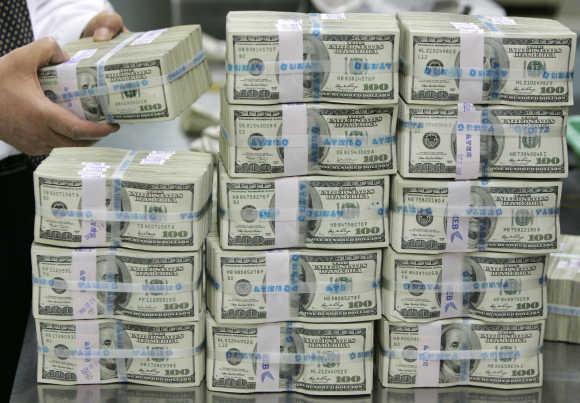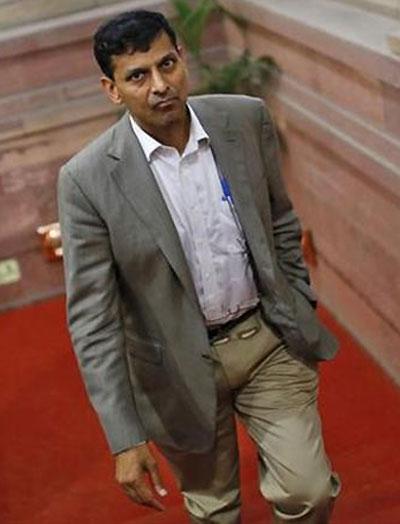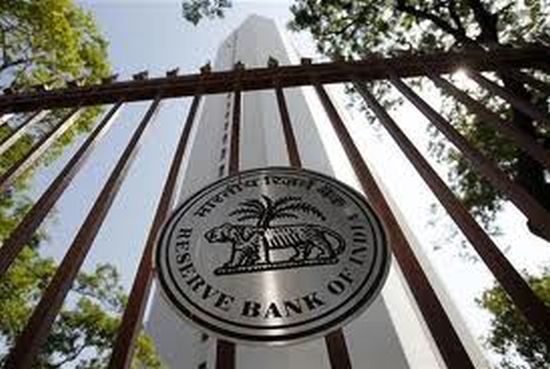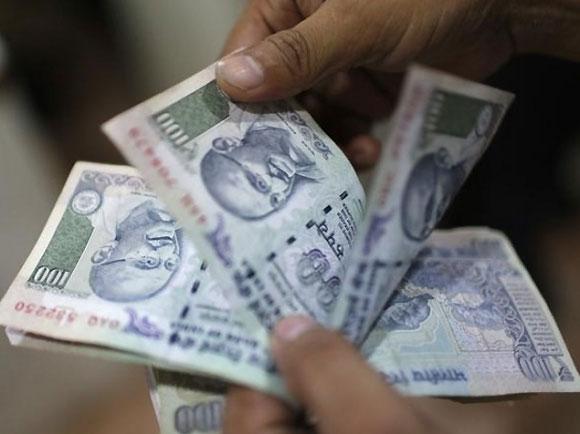
Corporate India’s plans to dollarise its rupee debt and repay local loans by raising funds through external commercial borrowing from foreign branches of Indian banks could be fruitless, with the Reserve Bank of India restricting the route from April 22.
“The policy change is bound to create more pressure on the already stressed Indian banking system; it will bring out more cases of irregular or delinquent accounts in the short run,” says Kumar Saurabh Singh, associate partner, corporate law firm Khaitan & Co.
RBI has put restrictions on credit facilities Indian banks can extend to foreign entities of domestic companies.
. . .

Now, banks cannot extend loans or guarantees to be used to roll over borrowers’ existing rupee loans.
In the past few quarters, many Indian companies, through the foreign arms of Indian banks, increasingly used the dollarisation route to convert some of their rupee liabilities into foreign currency liabilities.
The RBI notification effectively checks cases in which this mechanism isn’t used in the ordinary course of business, but to shift liabilities to the offshore arms of Indian banks or to convert rupee liabilities into non-fund based foreign currency liabilities.
. . .

The RBI restrictions followed the debt of large Indian companies rising 137 per cent, while their earnings before interest depreciation, tax and amortisation rose 90 per cent between 2009-10 and 2012-13.
While many companies sold assets to repay banks, some used the refinance route to stay out of the non-performing-asset bracket.
“The new regulations are likely to increase the amount of reported non-performing corporate loans.
“However, the increase will reflect a true picture of bank asset quality,” says Moodys analyst Srikant Vadlamani.
A few companies that have healthy balance sheets feel the RBI move is a landmark one.
. . .

“It will help improve disclosures.
“We don’t foresee any impact on the genuine exposure of Indian companies,” says Sushil Agarwal, chief financial officer, Aditya Birla Nuvo Ltd.
But overleveraged companies will bear the brunt, as these have to go for debt restructuring.
In recent years, many companies have dollarised debt, saying this would cut costs. In a report dated March 11, StanChart said replacing and repaying rupee loans through dollar loans had become common.
As a lot of these dollar loans were guaranteed by Indian banks through stand-by letters of credit, the risks of repayment lay with the Indian lenders that guaranteed the debt.
Refinancing was primarily aimed at rolling over/increasing the maturities of debt by replacing old loans with new ones of longer tenures and reducing finance costs by seeking to convert rupee debt to dollar loan, it said.
. . .

Citing media reports, it said Aircel was refinanced twice in 2013-14, even as promoter Maxis brought in quasi-equity of Rs 6,000 crore (Rs 60 billion) in October 2013.
The promoter brought in the funds after banks told Aircel more money had to be infused in it before they approved a four-year moratorium on repayment of the principal.
Following the fund infusion, Aircel, which was to begin paying part of the principal next year, secured a major reprieve; it has managed to refinance/reschedule its debt.
Similarly, Essar Oil dollarised its $2.3-billion debt, while a State Bank of India-led consortium refinanced Essar Steel’s debt.
The company was also given fresh funds of Rs 6,000 crore (Rs 60 billion).
. . .

Last week, Essar Steel officials said the company would convert $2 billion of rupee debt into dollar loans by June.
While dollarisation served companies well, it was also favoured by banks, as it kept many sticky accounts out of the non-performing assets’ list.
A senior executive of Indian Bank’s Association, the umbrella body of domestic banks, said the restriction on using ECB funds to repay loans followed the International Monetary Fund flagging concern about the un-hedged foreign currency exposure of Indian companies.
While external risk may be managed, a new flank has been opened on the domestic front.
. . .

“Weak corporates, which could have paid loans with ECB to stay off the list of defaulters, now carry high risks of becoming NPAs,” the executive said.
Moodys says though there is no systemic data in public domain on the extent to which Indian companies have used such practices to roll over existing debt, anecdotal evidence suggests these types of credit facilities obscure some banks’ bad loans, and RBI’s explicit curb on such practices indicates the practice isn’t uncommon.
Analysts say corporate debt restructuring or bilateral restructuring with increased provisioning will be the only solution to deal with the resulting delinquencies in the short run, at least till the economic situation improves and growth and earnings pick up again.
This will enable borrowers to service debts at prevailing costs in the rupee loan market.
. . .